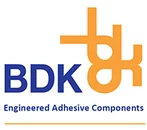Sterilisation helps ensure patient safety and eliminates harmful microorganisms. Without effective sterilisation, even the most advanced medical devices can pose a big infection risk. Achieving sterility, however, is not without its challenges.
The process, whether it is thermal, radiative, or chemical, can impact the properties of the material, and it can sometimes even damage the device and its performance. Read on to find out more.
Common Sterilisation Methods Used in the Medical Device Industry
Gamma Irradiation
This method of sterilisation offers deep penetration, whilst leaving zero residue behind which makes it suitable for pre-packaged devices. With that said, exposure to gamma radiation can cause issues like crosslinking and polymer degradation. You may also find it ends up causing changes within the mechanical properties as well.
Ethylene Oxide (EtO)
EtO sterilisation remains indispensable for medical devices that are sensitive to heat and moisture, covering a large share of sterile products. With ageing populations and rising surgical volumes, demand is set to grow.
However, even though it is very effective, it does run the risk of residual toxicity and adhesive interaction which can compromise the bonding interface. Its compatibility means it continues to play an essential role despite these challenges and more. Read on to find out the future of EtO.
Steam Autoclaving
Another sterilising option is steam autoclaving which relies on heat and pressure to sterilise the device. It’s cost-effective but, at the same time, it’s not suitable for most polymers. This type of sterilisation can also be a challenge for devices that use multilayer constructions.
Electron Beam (e-Beam)
This method of sterilisation is efficient and rapid due to its short exposure. Its shallower method of penetration means it is suitable to conveyor-based processing; however, it can cause discolouration as well as brittleness in adhesives.
For example, acrylic PSAs often undergo further crosslinking with e-Beam sterilisation which makes them harder, less tacky, and less able to wet out on surfaces. This leads to a noticeable drop in adhesive performance. Rubber adhesives also tend to degrade, otherwise known as chain scission, losing strength or tack. Although silicone PSAs are more radiation resistant, they may lose tack at higher doses.
Material Sensitivities & Failure Risks
Sterilisation exposes materials to radiative, thermal, or chemical stress which can manifest in a number of ways.
Adhesive bonds may soften over time, degrading under the sterilisation process. On top of this, they can also be compromised by warping or even shrinking. Chemical incompatibility can result in adhesive mitigation or even leachables, which can lead to yellowing, cracking, and brittleness.
Materials that tend to be most affected here include polyurethane adhesives and polyethylene films. Each material’s response will depend on the chemistry, showing how important it is to select and test each one.
Impact on Adhesives & Bonding Interfaces
Adhesives and bonding are also sensitive to sterilisation. Higher temperatures or reactive gases can alter the cure chemistry, and they can also impact the crosslink density which reduces the bond-line integrity.
Post-sterilisation, adhesives can experience tack loss and changes in reactivity. If you do not engineer your adhesive for sterilisation, failure under stress is a common outcome you need to be aware of too.
Design & Material Selection Considerations
Developing or choosing adhesives that are able to maintain their performance across different sterilisation cycles is important. You have to tailor formations to balance factors like adhesion, flexibility and durability, as well as multiple sterilisation conditions too.
Material Considerations
Medical device designers have to make sure that they are prioritising compatibility early on. Strategies include choosing materials that have some degree of thermal stability and considering factors such as radiation and resistance.
If you can make sure that you are taking the time to choose low permeability to moisture and gas, then this will help you identify and choose adhesives that can withstand any sterilisation method you end up choosing. It also means you can do so without compromising the performance of the sterilisation or the device.
By carrying out early testing, you can make sure you reduce the risk of failures at a later date. This means the process for safeguarding interests for both patients as well as manufacturers is quicker and more streamlined.
Trends & Innovations in Sterilisation-Resistant Adhesive Technologies
The medical industry has witnessed huge innovations in low-outgassing and gamma-stable adhesives, so it is now possible for custom formulations to achieve the best balance between adhesion and sterilisation.
Also, EtO faces stricter regulations due to health and environmental risks. As EtO is a carcinogen, compliance will demand costly upgrades, pushing manufacturers to balance safety, regulatory standards, and continuity of supply.
Alternatives like radiation, vaporised hydrogen peroxide, and chlorine dioxide are gaining traction, though scalability and compatibility limit widespread use. EtO will continue to be used but in fewer applications, with the future looking more diversified and filled with safer sterilisation practices.
Procurement & Supply Chain Considerations
Material selection really does extend beyond technical performance. Sourcing adhesives and films with documented sterilisation performance is critical if you want to avoid failure at a later date. Without doing so, you run the risk of future product recalls, requalification, and regulatory delays which disrupts the entire supply chain.
If you want to get a good result out of your sterilisation, partnering with the right manufacturer – like BDK – is critical. You will have our expert support and regulatory compliance insight throughout the entire process, so you can rely on our best practices. Every custom adhesive and film development decision is backed by performance validation data, so you can rest assured the adhesive technology you choose for your medical device design will maintain its properties even during sterilisation.
